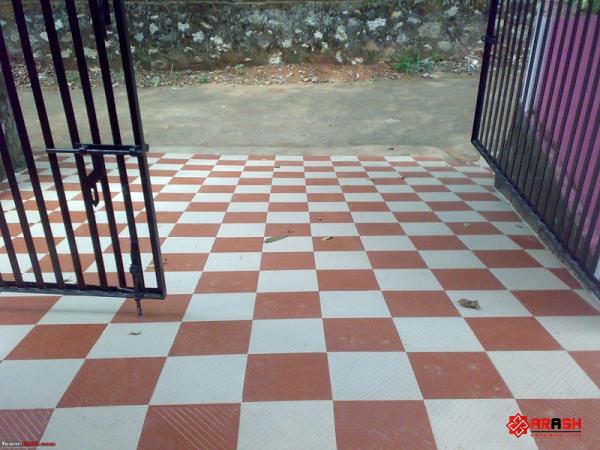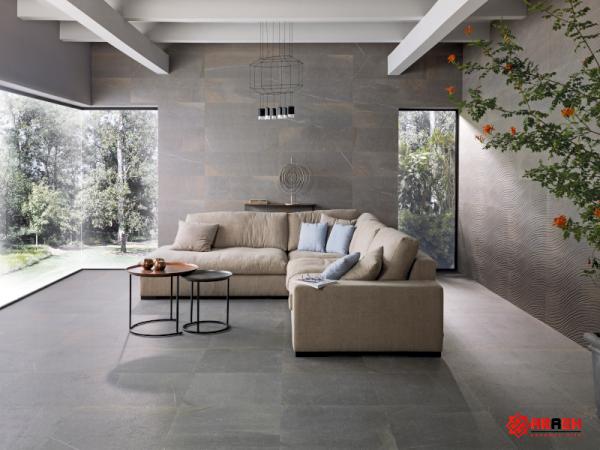Introduction:When it comes to selecting the perfect flooring option for your space, there are a plethora of choices available. Two popular options that often go head-to-head are ceramic tile and porcelain tile. While they may appear similar at first glance, a closer look reveals distinctive characteristics that can significantly impact the overall aesthetics, durability, and maintenance requirements. In this article, we will compare ceramic tile and porcelain tile flooring, helping you make an informed decision for your next flooring project. 1. Composition and Manufacturing Process: Ceramic Tile: Ceramic tiles are composed of a mixture of clay, water, and other minerals. They are then kiln-fired at lower temperatures. The glaze on ceramic tiles gives them their color and shine. Porcelain Tile: Porcelain tiles consist of fine porcelain clay and are fired at much higher temperatures compared to ceramic tiles. This process makes them denser, more durable, and less porous. 2. Durability and Resistance: Ceramic Tile: While ceramic tiles are generally durable, they are more prone to cracks and chips. They are not as dense as porcelain tiles and are more susceptible to impact damage. However, ceramic tiles can endure moderate foot traffic and are suitable for areas with less wear and tear.

.
 Porcelain Tile: Porcelain tiles are known for their exceptional durability and resistance. Their higher density makes them ideal for high-traffic areas, as they are less likely to crack or chip. Porcelain tiles are also highly resistant to moisture, stains, and scratches, making them perfect for spaces with heavy usage, such as kitchens and bathrooms. 3. Water Absorption and Moisture Resistance: Ceramic Tile: Ceramic tiles have a higher water absorption rate, usually around 5% or more. Therefore, they are more susceptible to water damage and may not be the best choice for moisture-prone areas such as bathrooms or basements. Proper sealing of the grout lines is necessary to prevent water seepage. Porcelain Tile: Porcelain tiles are extremely moisture-resistant due to their low water absorption rate of less than 0.5%. They are the preferred option for areas prone to moisture, spills, or even outdoor installations, as they are less likely to be affected by expansion or contraction caused by temperature changes. 4. Aesthetics and Design Options: Ceramic Tile: Ceramic tiles offer an extensive range of design possibilities.
Porcelain Tile: Porcelain tiles are known for their exceptional durability and resistance. Their higher density makes them ideal for high-traffic areas, as they are less likely to crack or chip. Porcelain tiles are also highly resistant to moisture, stains, and scratches, making them perfect for spaces with heavy usage, such as kitchens and bathrooms. 3. Water Absorption and Moisture Resistance: Ceramic Tile: Ceramic tiles have a higher water absorption rate, usually around 5% or more. Therefore, they are more susceptible to water damage and may not be the best choice for moisture-prone areas such as bathrooms or basements. Proper sealing of the grout lines is necessary to prevent water seepage. Porcelain Tile: Porcelain tiles are extremely moisture-resistant due to their low water absorption rate of less than 0.5%. They are the preferred option for areas prone to moisture, spills, or even outdoor installations, as they are less likely to be affected by expansion or contraction caused by temperature changes. 4. Aesthetics and Design Options: Ceramic Tile: Ceramic tiles offer an extensive range of design possibilities.
..
 They are available in various sizes, shapes, colors, and patterns, allowing for creative and personalized installations. However, the glaze on ceramic tiles may wear off over time, revealing the less vibrant color of the base material. Porcelain Tile: Porcelain tiles often mimic natural stone or wood, providing a stylish and sophisticated look to any space. They come in various textures, finishes, and designs, and the color runs through the entire tile, making them more resistant to fading and wear. Porcelain tiles are highly versatile and can complement various architectural styles. 5. Maintenance and Cleaning: Ceramic Tile: The upkeep of ceramic tiles is relatively simple. Regular sweeping or vacuuming, followed by mopping with a mild detergent solution, is usually sufficient to keep them clean. However, the grout lines between ceramic tiles may require periodic maintenance as they are prone to staining and discoloration.
They are available in various sizes, shapes, colors, and patterns, allowing for creative and personalized installations. However, the glaze on ceramic tiles may wear off over time, revealing the less vibrant color of the base material. Porcelain Tile: Porcelain tiles often mimic natural stone or wood, providing a stylish and sophisticated look to any space. They come in various textures, finishes, and designs, and the color runs through the entire tile, making them more resistant to fading and wear. Porcelain tiles are highly versatile and can complement various architectural styles. 5. Maintenance and Cleaning: Ceramic Tile: The upkeep of ceramic tiles is relatively simple. Regular sweeping or vacuuming, followed by mopping with a mild detergent solution, is usually sufficient to keep them clean. However, the grout lines between ceramic tiles may require periodic maintenance as they are prone to staining and discoloration.
…
 Porcelain Tile: Porcelain tiles are effortless to maintain. Due to their low porosity, stains, spills, and dirt can be easily wiped off the surface. Regular sweeping or vacuuming followed by mopping with a mild detergent or vinegar-water solution is enough to keep them looking pristine. The grout lines may require sealing to maintain their original color and prevent staining. Conclusion: Choosing between ceramic tile and porcelain tile flooring depends on numerous factors, including the desired level of durability, water resistance, design options, and maintenance requirements. Ceramic tiles offer versatility and are suitable for moderate foot traffic areas, while porcelain tiles provide superior durability, moisture resistance, and a wide range of design possibilities. By carefully considering your needs and preferences, you can select the perfect flooring option that not only enhances the aesthetics of your space but also stands the test of time.
Porcelain Tile: Porcelain tiles are effortless to maintain. Due to their low porosity, stains, spills, and dirt can be easily wiped off the surface. Regular sweeping or vacuuming followed by mopping with a mild detergent or vinegar-water solution is enough to keep them looking pristine. The grout lines may require sealing to maintain their original color and prevent staining. Conclusion: Choosing between ceramic tile and porcelain tile flooring depends on numerous factors, including the desired level of durability, water resistance, design options, and maintenance requirements. Ceramic tiles offer versatility and are suitable for moderate foot traffic areas, while porcelain tiles provide superior durability, moisture resistance, and a wide range of design possibilities. By carefully considering your needs and preferences, you can select the perfect flooring option that not only enhances the aesthetics of your space but also stands the test of time.











Your comment submitted.